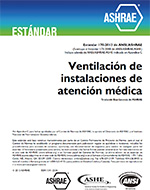Description
Click here to purchase
Canadian housing and building codes are moving towards the development of step-code tiered requirements for energy efficiency measures reaching toward net-zero energy levels. The current thermal performance requirement for windows has been stagnant at U-factor of 1.6 W/m2K (0.28 Btu/h-ft2-F) for several years. Collective efforts are underway by window industry and regulatory researchers to raise the thermal and optical performance, within the bounds of current technology choices with minimum disruptions to manufacturing process, and for easy and manageable uptake. For the net-zero energy homes, it is important to have lower heat loss to reduce heating loads substantially, while ensuring that the solar gains are optimized to avoid overheating even in northern cold climates. The energy evaluations of a large number of housing archetypes showed that a U-factor of 0.8 W/m2K (0.14 Btu/hr.ft2F) and mid-range solar heat gain coefficient, SHGC of 0.20 to 0.40, can facilitate net-zero energy targets in most northern climate zones. Fenestration component analysis showed a number of different options with low-e glazing, inert-gas-fills and framing materials; however, important to note, the need for triple or multiple glazing. Data analysis of NFRC and Canada’s ENERGY STAR window databases provide insights on these triple-glazed windows. This technical paper elaborates the results of thermal analysis of combinations of glazing, inert-gas cavities, and frame materials, along with window operator type (such as fixed, casement, sliders) to achieve lower U-factors. Data analyses showed appropriate combinations of low-e glazing, cavity fills and insulating glass unit thickness, and framing components for various operator types of windows.
Product Details
- Published:
- 2022
- Number of Pages:
- 9
- Units of Measure:
- Dual
- Product Code(s):
- DBldgsXV-C073




